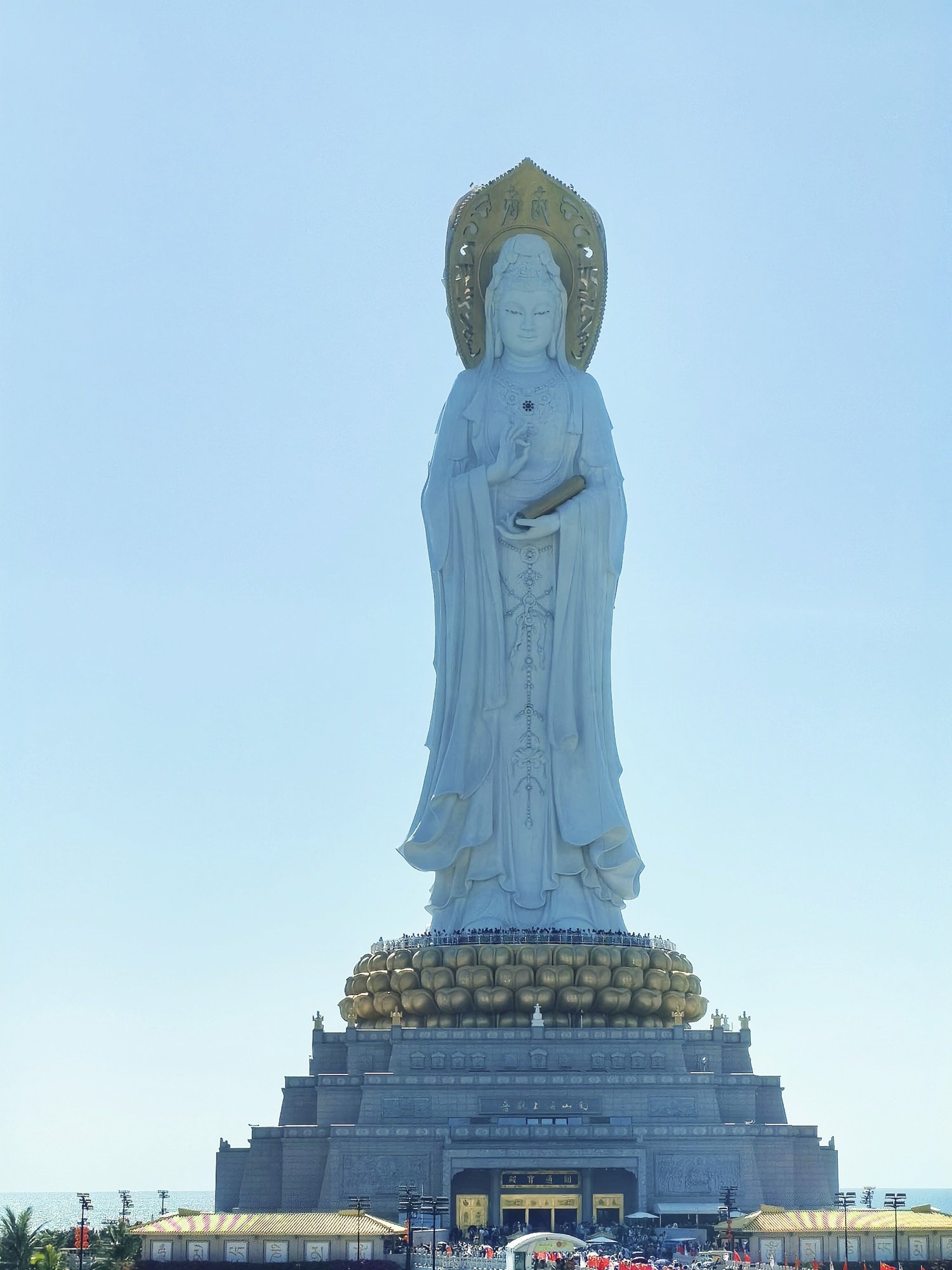Nestled on the southern coast of Hainan Island, the Nanshan Cultural Tourism Zone is home to a majestic and awe-inspiring monument—the 108-meter-tall statue of Avalokitesvara Bodhisattva, more commonly known in Chinese as Guanyin. This colossal statue is not only a pinnacle of Buddhist artistic expression but also a significant cultural landmark for the city of Sanya and a major attraction for tourists both domestically and internationally.
The statue’s impressive height makes it one of the tallest of its kind in the world. Its design is particularly unique, featuring three aspects of Guanyin, each facing a different direction, symbolizing the Bodhisattva’s immense compassion and omnipresence. This representation in art is deeply rooted in Mahayana Buddhism, which emphasizes the altruistic wish of Bodhisattvas to attain Buddhahood for the benefit of all sentient beings.
Constructed over six years and completed in 2005, the statue was built to withstand typhoons and earthquakes, a testament to modern engineering and traditional spiritual symbolism. The choice of location is also significant, as it overlooks the South China Sea, suggesting Guanyin’s role in safeguarding the fishermen and mariners from the natural perils of the waters.
The site not only serves as a spiritual nexus but also promotes cultural exchange and tourism. Visitors to the Nanshan Cultural Tourism Zone can explore various other attractions, including temples, parks, and museums that offer insights into China’s rich Buddhist heritage. The statue itself is a focal point for many religious festivals and ceremonies, drawing pilgrims and tourists who seek both spiritual solace and the chance to witness this grand icon of peace and benevolence.
The Guanyin statue of Sanya is a beacon of cultural pride and religious devotion, symbolizing peace and compassion. It continues to inspire awe and reverence, contributing significantly to the spiritual and cultural landscape of Hainan Island.
READ MORE:
